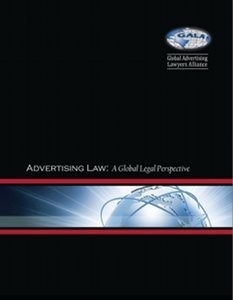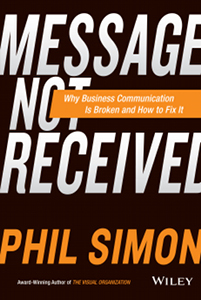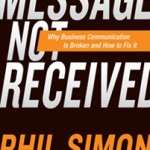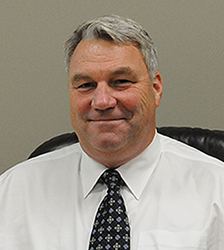Posted by Elena del Valle on July 31, 2015

GALA Advertising Law Book
Photo: Global Advertising Lawyers Alliance (GALA)
For marketers planning a multi-country ad campaign it may be useful to become familiar with the laws in the countries of their launch. For example, in the United States while there are no advertising practices prohibited outright there are restrictions, limitations, disclosure requirements and “medium- and industry-specific laws and regulations” on various advertising practices, according to the Global Advertising Lawyers Alliance (GALA).
This year, the Global Advertising Lawyers Alliance (GALA) published the first edition of the GALA Advertising Law: A Global Perspective, an 845-page book about international advertising, marketing and promotion laws in 56 countries from Argentina to Zimbabwe. The book is available via Amazon.com as a two volume publication (the review copy was one comprehensive digital document). Advertising Law I features information in alphabetical order by country from Argentina to Japan. Advertising Law II features the remaining countries from Kenya to Zimbabwe.
Organization lawyers wrote the book to educate in-house counsel, marketing professionals, agency executives, and firm lawyers about advertising law around the world. A list of the contributors and their firms appears in the back of the book.
Each entry outlines issues such as Advertising Framework, Self-Regulatory Framework, Advertising Law Basics, Price Advertising, Prohibited Practices, Sponsor/Advertiser Identification, Branded Content, Social Media, Rights of Privacy/Publicity, Special Clearance, Cultural Concerns, and Miscellaneous.
The United States section was co-written by attorneys from three New York law firms, Ronald R. Urbach, Joseph J. Lewczak and Allison Fitzpatrick from Davis & Gilbert, Rick Kurnit and Jeffrey A. Greenbaum from Frankfurt Kurnit Klein & Selz, and Douglas J. Wood, Joe Rosenbaum, John Feldman & Stacy Marcus from Reed Smith.

Click to buy Advertising Law I: A Global Legal Perspective: Volume I: Argentina – Japan (Advertising Law: A Global Legal Perspective) (Volume 1)
and
Advertising Law II: A Global Legal Perspective: Volume II: Kenya – Zimbabwe (Advertising Law: A Global Legal Perspective ) (Volume 2)
Comments:
Filed Under: Books
Posted by Elena del Valle on July 24, 2015

Message Not Received
Photos: book cover Wiley/Luke Fletcher, author Sean Sunkel
We often blame misunderstanding across cultures and languages on communication. Even among speakers of the same language sometimes there are formidable barriers. Cultural differences, abbreviated messages in limited length media such as emails and social media can lead to truncated or unclear messages. Such communications issues and at times failures represent business costs. The McKinsey Global Institute report estimate for the cost of bad communication is nearly $1 trillion (referenced in Chapter 4 of Message Not Received).
Phil Simon, who specializes in technology and has authored several books, is convinced communication within businesses is not working properly. In Message Not Received Why Business Communication Is Broken and How to Fix It (Wiley, $35), a 236-page hardcover book published this year, he explains his concerns and offers solutions.
In Chapter 4, he says that although he considers emails indispensable there are issues related to that type of message that users are often unaware of, such as its lack of nuances and emotional depth. Because of that they are sometimes not the most appropriate method for complex discussions. He points out that emails may also be the cause of legal concerns, foster internal competition, be too copious to process and manage, and have poor search functions.
“I knew that e-mail fails us on several levels, but I was unaware of the extent of the problem,” Simon said by email. “As I discuss in the book, e-mail gives the false appearance of one-to-one, in-person communication. For instance, consider a 2006 series of studies by two psychologists, Justin Kruger, PhD of New York University and Nicholas Epley of the University of Chicago. In short, Kruger and Epley wanted to determine if people were as good as they thought they were at discerning the subtext of a message. Participants were only able to accurately communicate sarcasm and humor in barely half—56 percent—of the e-mails they sent. And if that isn’t bad enough, most people had no idea that they weren’t making themselves understood.”

Phil Simon, author, Message Not Received
When asked why he wrote the book he replied, “I truly believe that we’ve reached a tipping point, and my research confirmed as much. Employees have never been more overwhelmed, the subject of Chapter 2. They’re being asked to integrate more content, more messages. They’re checking e-mail on weekends, holidays, and vacation (when they take it). They’re constantly on call, barely able to keep their heads above water.
Fortunately, there’s a two-fold solution, and I didn’t see any book out there that attacked this problem from this particular angle. First, we can embrace simpler language. There’s no reason to use terms “value-add use cases” and other linguistic atrocities. Beyond that, everything need not be communicated via e-mail. New, truly collaborative tools like HipChat, Smartsheet, and scores of others make it easier than ever to communicate effectively. And let’s not forget the ability go old school. Sometimes, an in-person meeting or phone conversation is the best way to proceed. Far too many of us seem to have forgotten that.”
The book is divided into eight chapters within four main parts: Worlds Are Colliding; Didn’t You Get That Memo? Why We Don’t Communicate Good at Work; Message Received; and What Now?
“Many business folks routinely forget their audiences. They forget —or have never heard of—the curse of knowledge. We’ve all seen IT people who seem to speak a different language when dealing with non-technical employees. What happens?” he asked. “Employees roll their eyes, tune out, or simply don’t understand what’s taking place. On the web, there’s no shortage of mind-numbing, vacuous marketing copy. Marketers and salespeople often speak in buzzwords and then wonder why their prospective clients don’t pull the trigger. Rare is the person who communicates perfectly, myself included. We all would benefit from using simpler language and minimizing our e-mails.”
Simon advises organizations about communication strategy, data and technology. He is also author of The Age of the Platform.

Click to buy Message Not Received
Comments:
Filed Under: Books
Posted by Elena del Valle on July 17, 2015

Volunteer Vacations
Photo: Independent Publishers Group
Are you tired of going on vacation to the same place every year? Do you yearn to do more than just lounge on the beach every day during your getaway? If so a different kind of break might appeal to you. Every year people dedicate their free time to worthy causes and many of them pay for the privilege. Some are families traveling together, others are seniors with time to spare, and many are people with few or many skills seeking a way to make a difference on their time off from work.
In Volunteer Vacations: Short-Term Adventures That Benefit You and Others, 11th Edition (Chicago Review Press, $18.95) Doug Cutchins, Bill McMillon, and Anne Geissinger share an extensive list of 150 organizations offering such volunteerism opportunities. The 431-page softcover book published in 2012 includes a foreword by Ed Asner.
The book provides some basic information about voluntourism, the work and vacation combination. Each listing profiles the organization, its mission, projects, year founded, number of volunteers in the previous year, work they do, locations, costs, duration, and type of skills they seek. There are also short descriptions from past volunteers about their personal experiences on a project.
The charitable organizations in the United States and abroad are diverse and host travelers for a variety of projects and lengths. Vacationers can participate in projects such as searching for sea turtle nests in Greece or Taiwan, for example, or teaching English in a remote village.
When the book was published McMillon was a freelance writer for Odyssey magazine. Cutchins was director of service and social commitment at Grinnell College, and Geissinger was a part-time photographer.

Click to buy Volunteer Vacations
Comments:
Filed Under: Books
Posted by Elena del Valle on July 6, 2015

Susan Deehan, chairwoman, Actionable Intelligence Technologies

Tim Deehan, president, Actionable Intelligence Technologies
Photos: Actionable Intelligence Technologies
A podcast interview with Susan Deehan, chairwoman, and Tim Deehan, president, Actionable Intelligence Technologies, is available in the Podcast Section of Hispanic Marketing & Public Relations, HispanicMPR.com. During the podcast, they discuss how white collar crime goes largely unsolved with Elena del Valle, host of the HispanicMPR.com podcast.
Susan and Tim are cofounders of Actionable Intelligence Technologies. She has developed an award-winning proprietary software that helps law enforcement agencies and forensic accounting firms around the globe find and prosecute large, complex financial fraud schemes, and recover money back to the victims. Tim works in product development, operations and sales at the company.
To listen to the interview, scroll down until you see “Podcast” on the right side, then select “HMPR Susan Deehan and Tim Deehan” and click on the play button below or download the MP3 file to your iPod or MP3 player to listen on the go, in your car or at home. To download it, click on the arrow of the recording you wish to copy and save it to disk. The podcast will remain listed in the July 2015 section of the podcast archive.


















